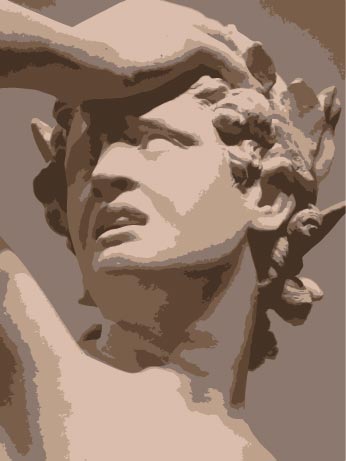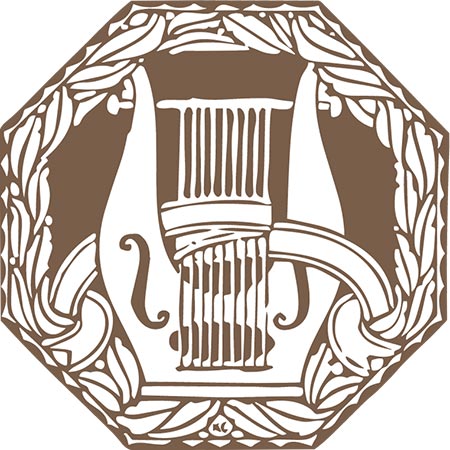Think
Three Goldsmiths: divine, black and on fire
This week we count on the pen of Javier Yániz Ciriza, recently graduate in Philology Hispánica by the University of Navarra, who talks to us about some of the works that, throughout history, have inspired the myth of Orpheus.

The story of Orpheus and Eurydice enjoys a long tradition where different artists - from Ovid or Virgil to the examples noted in this entry - have seen in this myth an opportunity to perform a transformation, in other words, a proposal where essential elements of the story are recognisable and yet update the narrative. Such a transformation can stick more or less to the first text or hypotext, or present a more radical proposal , for example, in core topic parody.
Genette brilliantly analyses in his already classic Palimpsests1the capacity of literary discourses to establish transtextual relations. Among the possible relations, Genette points out the distinction between "intertextuality, paratextuality, metatextuality, architextuality and hypertextuality", the latter (hypertextuality) being the one I will deal with briefly in this entrance. Thus, there is a relationship between the hypotext (in our case the myth of Orpheus) and the hypertext (text that exists in terms of a re-reading and re-elaboration-transformation of the hypotext).
Let us give some examples of reworkings of the myth of Orpheus and Eurydice that serve to clarify the concept of hypertext: Cocteau's film Orphée, Monteverdi's opera - considered among musicologists as one of the first operas - or perhaps, to stay in the field of music, Offenbach's comic opera Orpheus in the underworld, from which the very popular can-can in the last act is derived.
In this way, the general goal of this essay is to observe the capacity of essentially literary discourses to generate transtextual connections, specifically, hypertextual relations. As a more concrete goal my proposal seeks to detect the transmission of the Orpheus myth to the present day by isolating and analysing, in turn, the strategies employed to produce the transformation.
The small corpus of work with which I have worked is made up of three serious recreations of the myth of Orpheus, related to the dramatic genre - understood in a broad sense, since, as will be seen, among the works selected there is a sacramental play and two films⎯. These are, as you may have guessed from reading the degree scroll of this entrance: The Divine Orpheus, Black Orpheus and Portrait of a Woman on Fire. Unfortunately, for reasons of length, only a few of the issues noted above will be sketched out.
THE DIVINE ORPHEUS (1634 AND 1663)
El divino Orfeo is an auto sacramental by Pedro Calderón de la Barca with a textual history of great interest which I cannot go into here essay. I will only point out for the curious that there are two versions of the same play: the first is dated 1634, corresponding to a period of his youth, while the second is dated 1663. Thus we start from both a transformation of the myth (filtered in allegorical core topic ) and a reworking that transforms the first version, i.e. the text from which the 1663 version starts is not the prototype of the myth of Orpheus and Eurydice, but the 1634 version.
Calderón's great contribution, without being the first2 , is the Christianisation of Orpheus. We see this in two examples.
In the first verses of both versions, the spectator contemplates how the world is created through Orpheus' song. In this way, the figure of Orpheus, from the very first verses, is linked to the God of Genesis who, through the Word, creates reality. This creative and world-shaping quality also appears in the Black Orpheus.
|
ORPHEUS: For my voice in the beginning the heavens and the earth created, after the heavens and the earth let there be daylight. (1634: vv. 29-32) |
ORPHEUS: Who from nothing makes all things like. Let the light be made fair, and in that divided struggle of the shadows it burns, and all things light. (1663: vv. 96-100) |
As the play progresses, Orpheus, guided by Love (in the first version), decides to descend to hell to rescue the kidnapped Eurydice (in the first version) or Human Nature (in the second version), wielding a harp. This instrument is intimately related to King David, which is why the relationship between classical mythology and the Old Testament as sources prophesying the coming of the Messiah is of great interest.
In the annotation (in the first version) it is noted that the harp mast represents a cross, while in the second version the visual metaphor of the harp-cross is further elaborated by describing it as:
|
That instrument of three pegs and three timbers to the coming centuries Jesus' zither is. (1663: 1098-1101) |

ORFEU NEGRO (1959)
The second transformation I present to you is Black Orfeu by Marcel Camus (1959). In this film, Camus takes Vinicius de Morales' text Orfeu da Conceição (1954) as the starting point for his own version. Thus, the source of this reworking, once again, is not directly the myth, but a reworking of the reading of the myth adapted to the cinema.
The great contribution of Camus - and also of Morales - is to transfer the myth to the carnival of Rio de Janeiro, thus producing a syncretism between carnival traditions, the presence of Creole mysticism and the story of Orpheus and Eurydice itself.
After a few scenes we arrive at one of the most important moments of the film. Two children ask Orpheus if "Is it true that you can make the sun rise by playing the guitar", to which Orpheus replies in the affirmative.
He adds that "there was an Orpheus before me, and there will be another after me; but now I am I". The idea of metempsychosis or transmigration of Orpheus' soul connects with the idea put forward at the end of Divine Orpheus. Although this author is thinking of the resurrection of Christ; after saving Human Nature, Orpheus invokes the nave of the Church and the seven sacraments so that, although he dies, his song will always spread and be perpetuated throughout the world.
Thus, the concept of the impossibility of killing that Orpheus symbolises is taken up again at the end of the film, when, after Orpheus' death, two children appear running with a guitar. One of them tells him "Play and make the sun rise!", with the music of this new black Orpheus a new day begins in the world.
PORTRAIT OF A WOMAN ON FIRE (PORTRAIT DE LA JEUNE FILLE EN FEU) (2019)
And finally, in Portrait of a woman on fire (2019) by Céline Sciamma, we are presented with the tragic story of two women who love each other deeply, but due to the society in which they live, France at the end of the 18th century, are forced to end their relationship.
One of the most important moments of the film is the reading of the myth of Orpheus from Ovid's Metamorphoses, just before the lovers confess their love. The reading of the myth and the different interpretations proposed by the characters are key to interpreting the update to the myth proposal in this film. Perhaps it might be interesting to recover the interpretations they give at the end of the myth:
-
Sophie, the young maid, comments that it is irrational for Orpheus to turn around, as he had clear instructions not to turn around.
-
Marianne, the painter, comments that by turning around Orpheus treasures forever the poetic memory of Eurydice, that is, according to her interpretation, thanks to losing her at that moment when his love is at its most intense, his memory will last forever.
-
This interpretation is qualified by Héloïse, the portrayed, proposing a change of focus, that is to say, according to her, it is not Orpheus who decides to turn around, but Eurydice who asks him and says: "Turn around", it is she who chooses death, knowing that her life with Orpheus, even if she loves him, is impossible. In a sense, Héloïse comes to the conclusion that even if she wishes to be resurrected and live with Orpheus, her destiny is already written, it is death, which she accepts with integrity.
As can be seen in the film, the interpretation presented by Héloïse will be the one applied to her life and will be strongly linked to Eurydice. With this subtlety, Sciamma proposes not only a transformation that affects the masculine role of Orpheus, who becomes feminine, but also a greater focus on Eurydice, a character who is often simply presented as the object of Orpheus' desire.
As I have tried to show in this brief entrance, the myth of Orpheus enjoys great versatility when it comes to presenting transformations which, ultimately written request, show that classical myths are still relevant today, as they have the capacity to attract the attention of both the writer who takes them as a starting point in his proposal and the postmodern spectator. They thus earn the title of classics from plenary session of the Executive Council by right.
1 Gérard, G. (1989). Palimpsests: literature of the second Degree. Taurus.
2 I refer the curious reader who wishes to see the background to the Introduction to Enrique Duarte's edition: Calderón de la Barca, P. (1999). El divino Orfeo. Reinchenberg.
If you liked the article, you might be interested in one of our Degrees!








